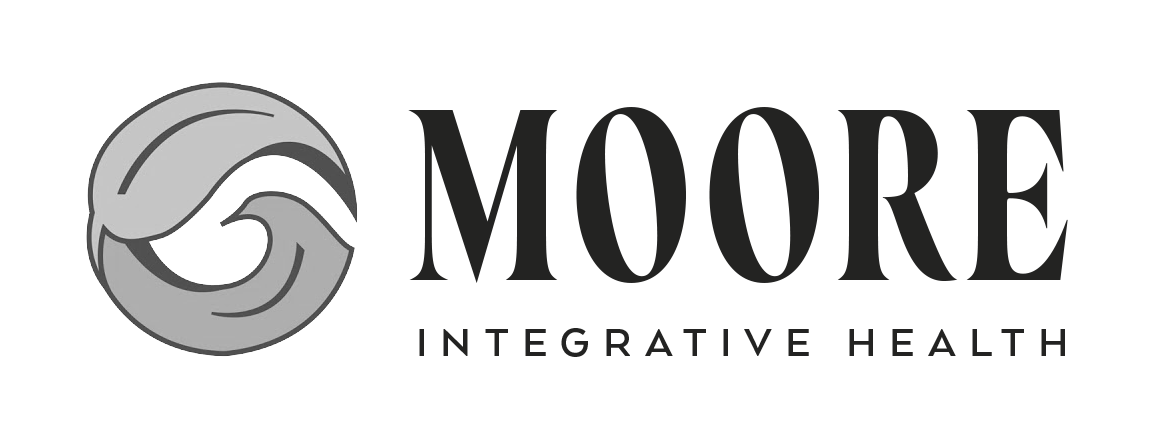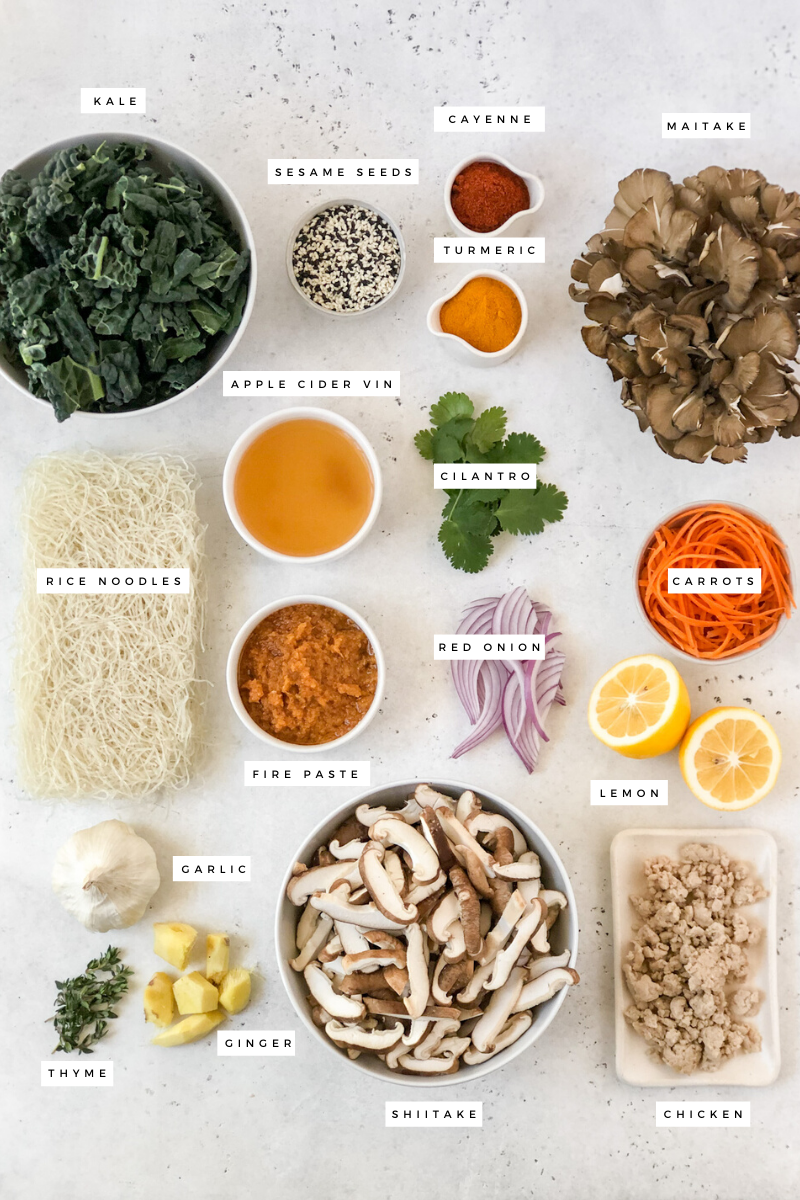THE BEST THING YOU CAN DO FOR YOUR IMMUNE SYSTEM
I don’t know about you guys, but I’ve had immunity on my mind these past couple of weeks. My heart goes out to the families of those who have been affected by the recent events occurring globally. I have felt a nagging urge to share some of my knowledge on the topic of immune system health in the hopes of supporting anyone wanting to take some extra precautionary measures to strengthen their immune systems. So, I’ve teamed up with my good friend and Holistic Chef Amy Power to deliver this important information (and some of Amy’s killer cooking) to you.
A working immune system does a good job of keeping viruses manageable, which is why the majority of the population is able to fight off most viruses. The impairment of the immune system, however, is an open invitation for a viral party. How does the immune system get impaired? Anti-biotics, corticosteroids, glucocorticoids, and other immunosuppressant medications can definitely trigger viral activity over time (1). General aging, stress, substance abuse, alcohol intake, poor diet, micronutrient deficiencies, and over-exercising plays a role. And unfortunately, autoimmunity and other chronic disease conditions can weaken the immune system. But there is good news. There are many surprisingly simple ways that you can support your immune system strength immediately and from the comfort of your own home.
For one, I cannot stress enough the importance of making vegetables, fruits and REAL food the biggest part of your diet. This means avoiding foods that are processed and in packaging (i.e. pasta, crackers, snack foods, breads). By focusing on whole foods, you’re consuming foods that are the richest in anti-viral nutrients as well as healthy pre-biotic fibers to support a healthy microbiome (I’ll speak more to your microbiome’s role in supporting your immune system in a minute). My biggest tip here is to diversify your fruit and vegetable intake as they all have different nutrient content. Eat the rainbow, try to get different colors every time you shop. Just eating iceberg lettuce will not get the job done.
Two, MANAGE YOUR STRESS LEVELS. I know that you know the textbook definitely of relaxation, but I also know that you don’t know how to apply that into your life. Start trying harder. Yoga, meditation, reading, saying no to new work projects, taking every opportunity for a day off, all can make a difference in the strength of your immune system.
Three, create a healthy environment for your microbiome to flourish. The majority of your immune system is in your gut. Yes, that is what I said. THE MAJORITY OF YOUR IMMUNE SYSTEM EXISTS RIGHT IN YOUR GUT. By cutting sugar out, reducing alcohol intake, avoiding antibiotics when possible, consuming plenty of pre-biotic fiber, AND taking a quality probiotic with diverse strains of bacteria in it you are giving your immune system a big hug.
And lastly, botanicals and nutraceuticals can come in handy for an extra boost. Here, quality and quantity can make or break their effectiveness. Below are my go-to’s in this category:
Nutraceuticals
Vitamin A Drops (one drop a day, unless you are taking another supplement that has vitamin A in it, then you need to reduce your dose)
Vitamin C 1000-4000mg daily
Zinc
Vitamin D3 (until your levels are ideal, here you’ll need to have lab work done)
Zinc
Selenium
Omega-3 Fatty Acids & ALA
Botanicals
Curcumin/Turmeric
Oregano Oil
Licorice (no not the candy, the raw licorice root in a tea. If you have high blood pressure, do not take this)
Astragalus
Nettles
Garlic
Rosemary
Rose Hips
Shiitake, Maitake, Reishi Mushrooms
Echinacea
Elderberry
There are some great anti-viral botalical throat sprays on the market!
Another piece of great news is, Amy and I have created a recipe to knock your socks off (in a good way I promise), that contains all of these nutrients and more. But before I share the recipe, let me explain what is in this beast and why:
Red hot peppers (Marini et al., 2015): Capsaicin is the active component of red peppers and has been researched to inhibit the cellular invasion of viruses.
Ginger (Chang et al., 2013): The active constituents in fresh ginger, gingerol and zingerone, have been shown to inhibit viral replication and prevent viral invasion into cells.
Raw Garlic (Aggarwal & Shishodia, 2004): Allicin found in raw garlic has been proven in studies to reduce the duration and severity of the common cold and flu. Cooking garlic deactivates allicin.
Cilantro (Delaquis et al., 2002): Recent research has demonstrated this herb to have anti-microbial properties as well as chelating properties. Chelation means that it can bind to minerals and pull them from your body – which is particularly important for heavy metal toxicity. Heavy metal burden is not uncommon today, and heavy metals inhibit the immune system.
Turmeric (Chattopadhyay et al., 2004): Helps to prevent viral replication, lower inflammation, and reduce oxidative stress.
Shiitake & Maitake Mushrooms (Lindequist et al., 2005): Studies have demonstrated anti-viral activity against HIV and influenza due to the triterpene acids in medicinal mushrooms.
Bone Broth: Natural collagen and other nutrients found in bone broth have been shown to help heal a weakened intestinal lining that becomes an opportunity for pathogens to enter.
Lemon: Rich in Vitamin C and phytonutrients to boost immune system.
Carrots: Rich in Vitamin C and antioxidants to support the body in fighting viruses.
Pumpkin Seeds: Rich in Zinc – an important nutrient used to build immune cells.
Astragalus (UMMC, 2017): Powerful antiviral herb with extracts that boost the immune system and fight viruses. Should not be used with an autoimmune disorder.
Nettles (Uncini Manganelli et al., 2005): A well-established anti-inflammatory that contains protective chlorophyll and has documented research demonstrating its antiviral properties for herpes zoster and retroviruses.
So without further ado, I present to you THE VIRAL SLAYER. And yes, this recipe seems a bit discouraging but it’s well worth the time and energy, trust me.
MAKES 6 SERVINGS
INGREDIENTS
BROTH
6 New Mexico chilis
2 2-inch chunks peeled ginger
6 shallots rough chopped
4 cloves of garlic
2 bunches of cilantro stems
1 tablespoon turmeric
1 tablespoon fresh thyme
1 tablespoon salt
2 tablespoons avocado oil
1-2 pounds of ground chicken
3 cups sliced shiitake mushrooms
3 cups maitake mushrooms
4 cups good bone broth
½ cup apple cider vinegar
POWER STASH PACK, immune-boosting herbs in a tea ball or wrapped in cheesecloth to simmer in broth
4-5 Slices of dried Astragalus Root
3 TBSP dried Nettle Leaf
1 bunch of kale, sliced
1 package of rice noodles, cooked
Substitute for Shiratake or Yam Noodles if you have Candidiasis, previous head injuries, or ADHD.
FIRE PASTE
3 tablespoons fresh ginger, grated
2 tablespoons fresh garlic, grated
1-2 teaspoons cayenne (depending on how spicy to like)
2 Meyer lemons zested
⅓ cup extra virgin olive oil
1 teaspoon salt
TOPPINGS
Fresh cilantro leaves
Grated carrots
Sliced red onions
Lemon wedges
Pumpkin seeds
Sesame seeds
Fire paste
Salt to taste
INSTRUCTIONS
1. Place chili’s in a heatproof bowl, add boiling water to cover and let soak until softened, 25-30 minutes.
2. Drain chili’s, reserving the soaking liquid, remove stems. In a Vitamix or blender puree chiles, ginger, shallots, garlic, cilantro stems, turmeric, thyme, and salt. Adding 2 cups of the soaking liquid, adding more if needed, until smooth.
3. In a large soup pot add avocado oil and brown chicken. Add chile mixture to the chicken and cook for 5 minutes, reducing some of the liquid, stirring frequently. Making sure not to burn the bottom of the pan.
4. Add mushrooms, broth, apple cider vinegar, power stash pack, simmer for 30-40 minutes. Remove the power stash pack before serving.
5. To make the fire paste, place all the ingredients in a small bowl, stir to combine.
6. To assemble the noodles bowls, add cooked rice noodles, ladle hot broth mixture and top with the goodies to make your own personal style.
Recipe written in collaboration with Amy Power of Fed & Full. To check out Amy’s amazing work, visit fedandfull.com.
*Please note that this is NOT a cure, remedy, or a treatment for any specific virus, including COVID-19. These are recommendations for supporting you in building a healthy immune system, so that your body can better support and defend your cells from the invasion of viruses.
Bibliography:
Aggarwal, B. B., & Shishodia, S. (2004). Suppression of the Nuclear Factor-κB Activation Pathway by Spice-Derived Phytochemicals: Reasoning for Seasoning. Annals of the New York Academy of Sciences, 1030(1), 434–441. https://doi.org/10.1196/annals.1329.054
Chang, J. S., Wang, K. C., Yeh, C. F., Shieh, D. E., & Chiang, L. C. (2013). Fresh ginger (Zingiber officinale) has anti-viral activity against human respiratory syncytial virus in human respiratory tract cell lines. Journal of Ethnopharmacology, 145(1), 146–151. https://doi.org/10.1016/j.jep.2012.10.043
Chattopadhyay, I., Biswas, K., Bandyopadhyay, U., & Banerjee, R. K. (2004). Turmeric and curcumin: Biological actions and medicinal applications. CURRENT SCIENCE, 87(1), 10.
Delaquis, P. J., Stanich, K., Girard, B., & Mazza, G. (2002). Antimicrobial activity of individual and mixed fractions of dill, cilantro, coriander and eucalyptus essential oils. International Journal of Food Microbiology, 74(1–2), 101–109. https://doi.org/10.1016/s0168-1605(01)00734-6
Lindequist, U., Niedermeyer, T. H. J., & Jülich, W.-D. (2005). The Pharmacological Potential of Mushrooms. Evidence-Based Complementary and Alternative Medicine, 2(3), 285–299. https://doi.org/10.1093/ecam/neh107
Marini, E., Magi, G., Mingoia, M., Pugnaloni, A., & Facinelli, B. (2015). Antimicrobial and Anti-Virulence Activity of Capsaicin Against Erythromycin-Resistant, Cell-Invasive Group A Streptococci. Frontiers in Microbiology, 6. https://doi.org/10.3389/fmicb.2015.01281
Ma, C., B. Walters, and R.n. Fedorak, Varicella zoster meningitis complicating combined anti-tumor necrosis factor and corticosteroid therapy in Crohn’s disease. World J Gastrocenterol, 2013. 19(21): p. 3347-51.
UMMC. Viral encephalitis. [cited 2017 01-04].
Uncini Manganelli, R. E., Zaccaro, L., & Tomei, P. E. (2005). Antiviral activity in vitro of Urtica dioica L., Parietaria diffusa M. et K. and Sambucus nigra L. Journal of Ethnopharmacology, 98(3), 323–327. https://doi.org/10.1016/j.jep.2005.01.021


